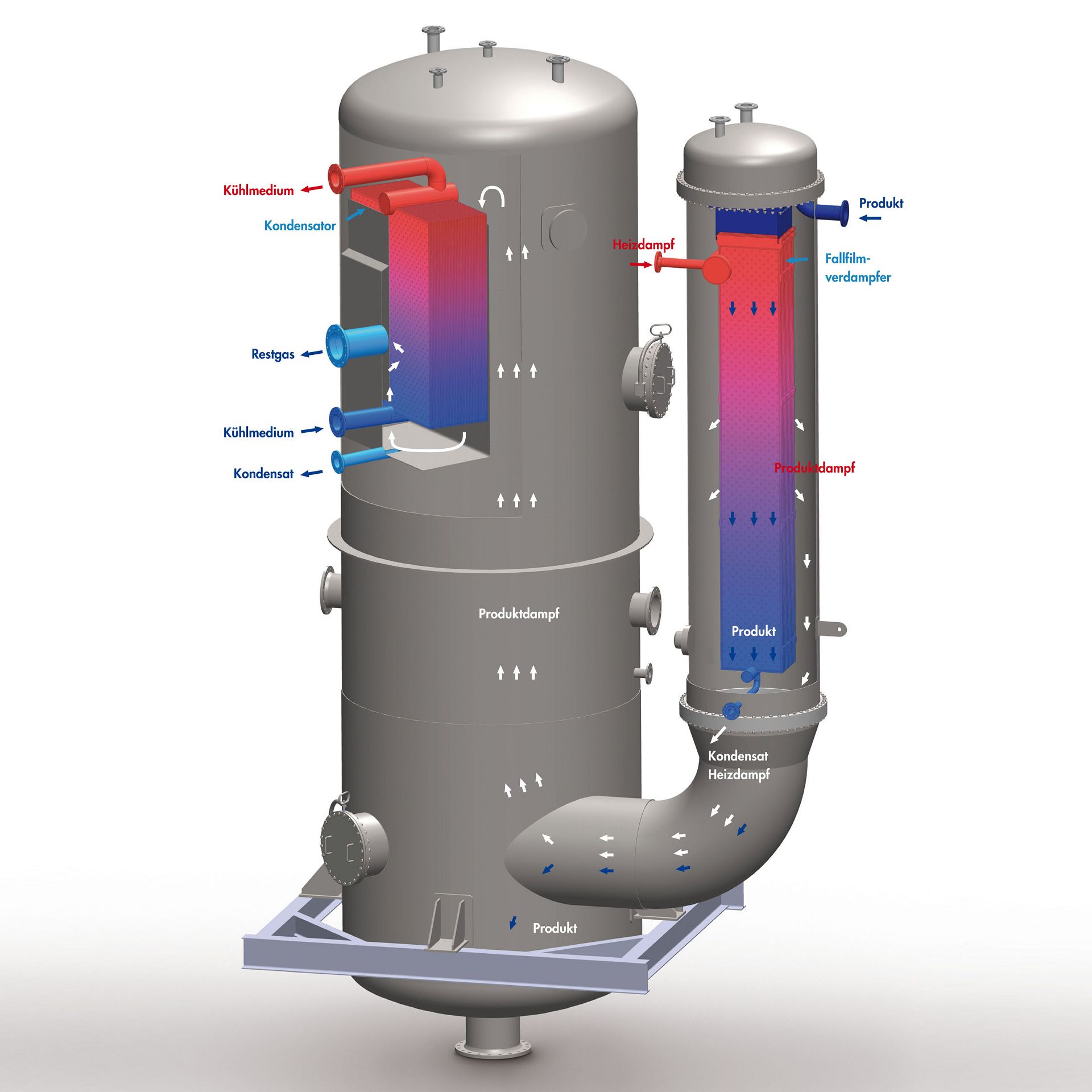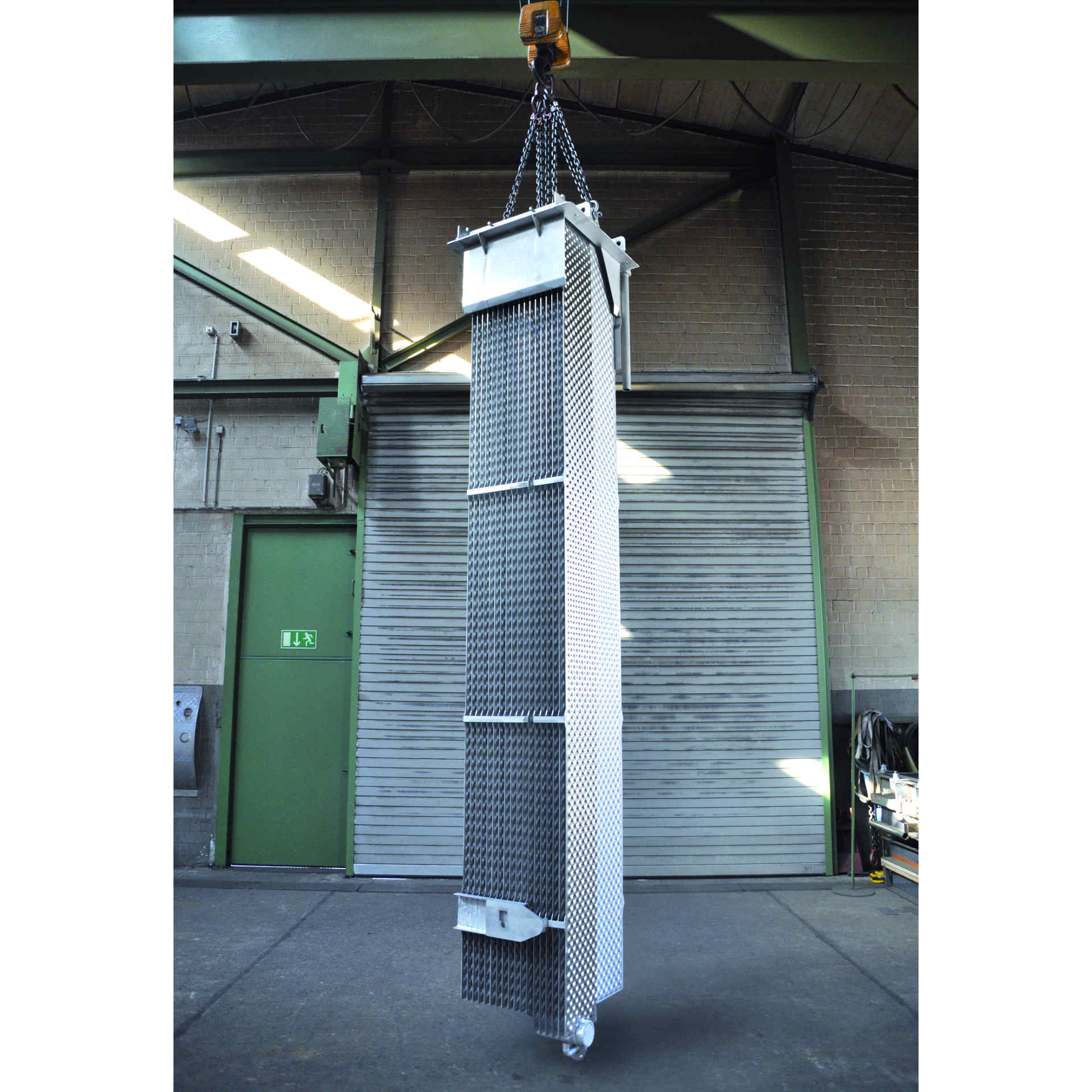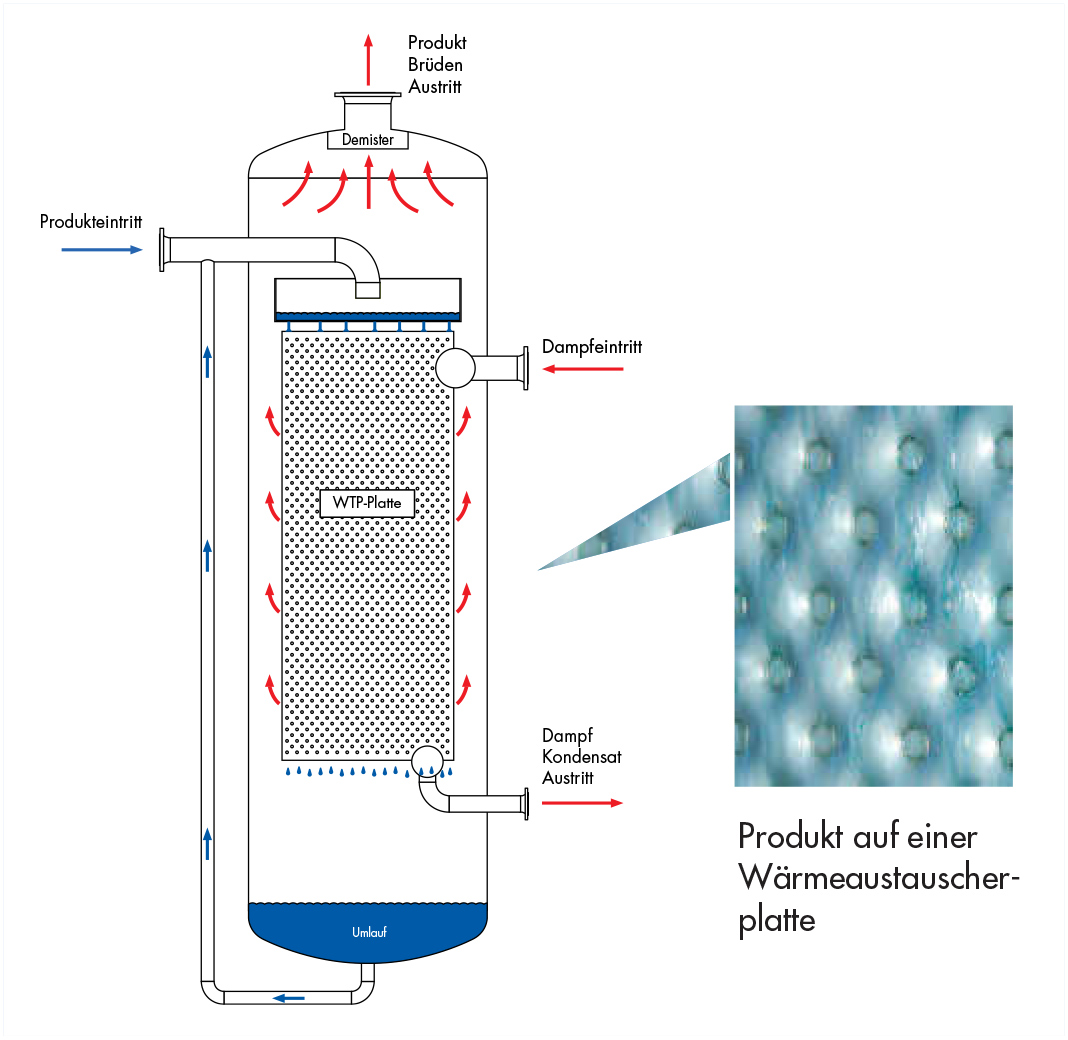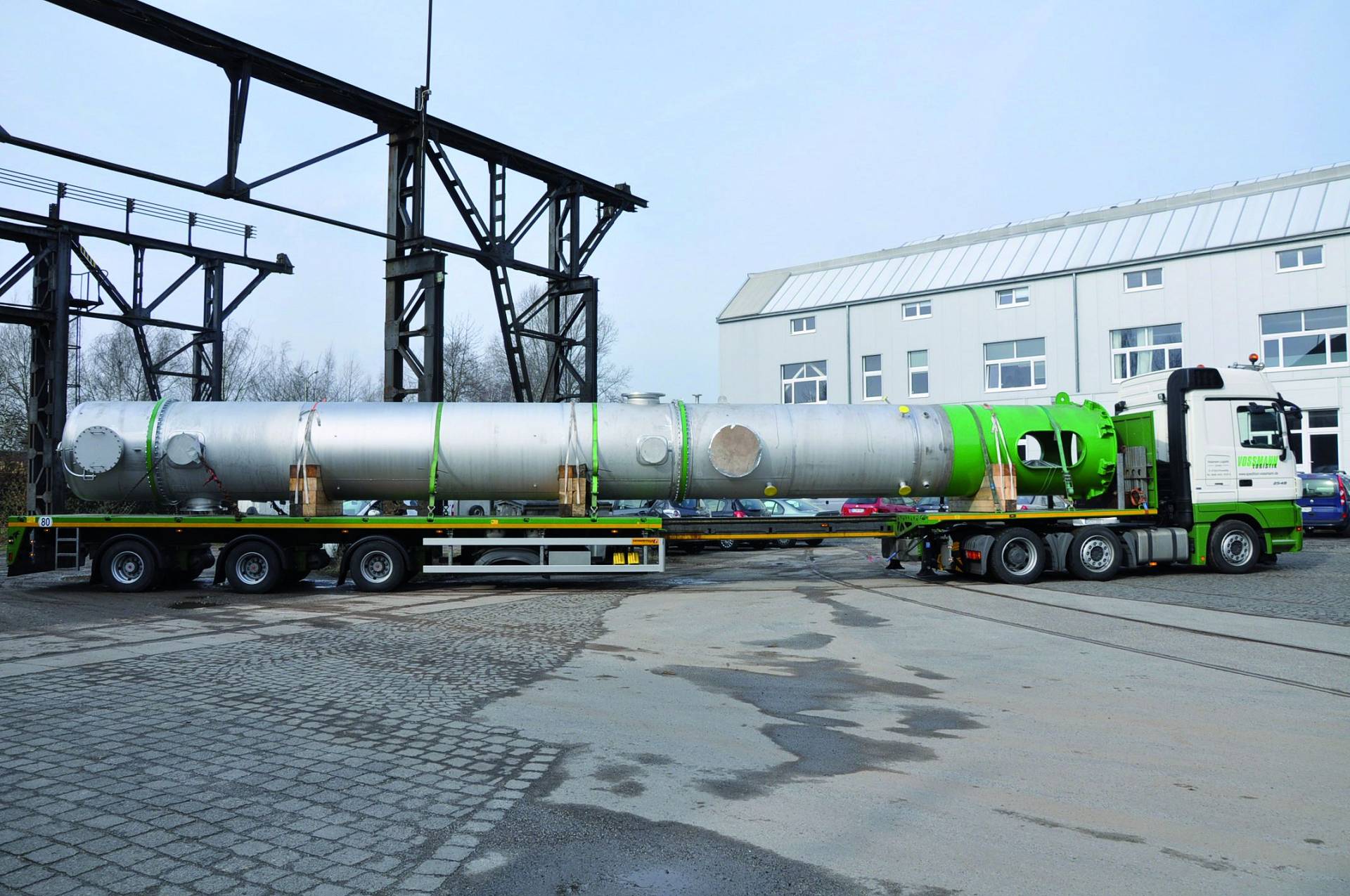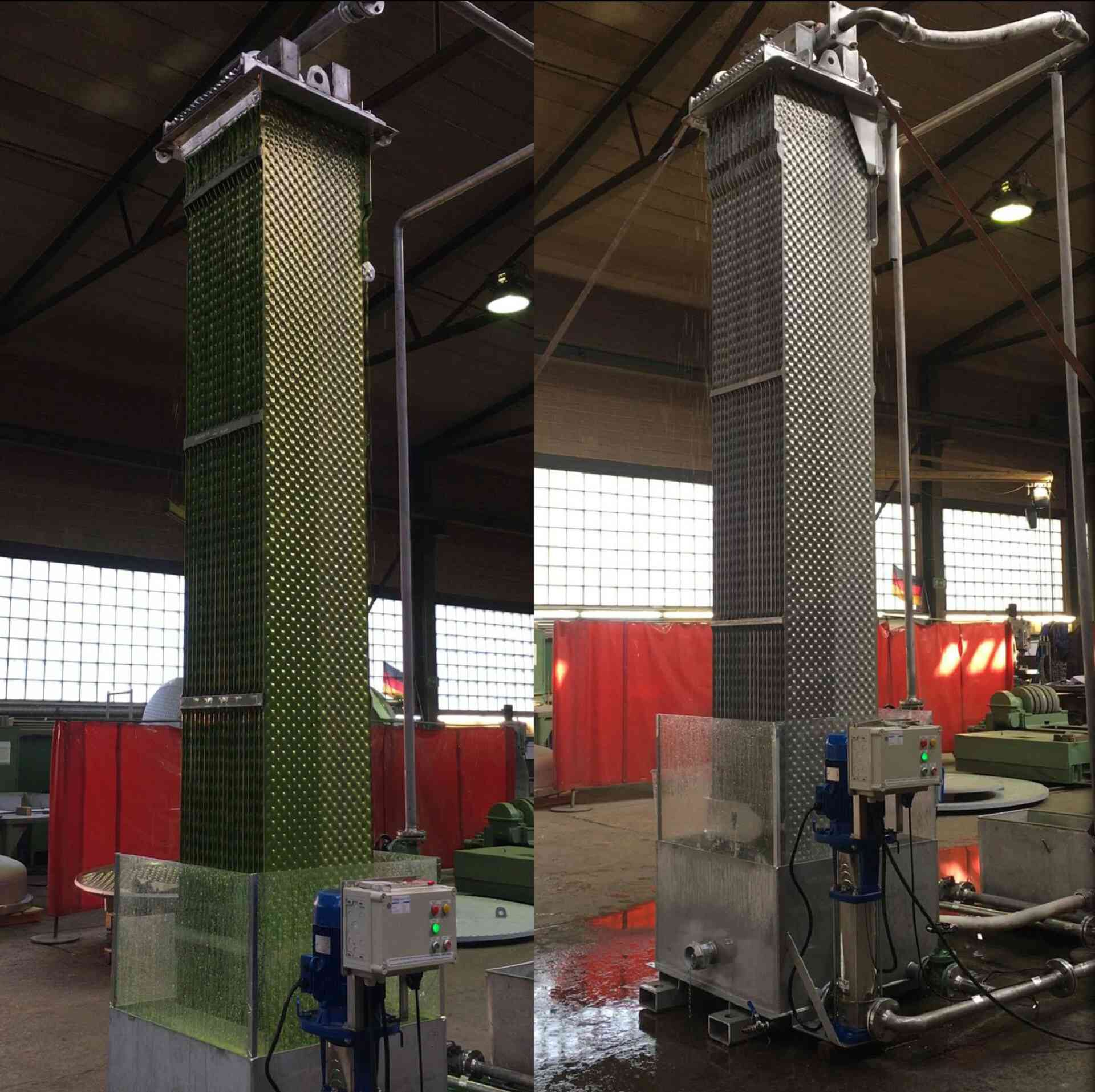WTP-Falling Film Evaporator
Falling film evaporators in vertical design or trickle film evaporators in horizontal design are used for the gentle evaporation of liquids in the chemical industry or food industry, for example for the concentration of fruit juices by evaporating the water content. The evaporation takes place at small driving temperature differences. Since the liquid starts to boil without overheating by pure surface evaporation, only a small temperature difference of 3 to 8 degrees K between heating medium and product is necessary. In contrast to circulation evaporators, no bubble boiling generally occurs in falling film evaporators. Falling film evaporators are also suitable for liquids that tend to cake at higher wall temperatures. Fouling on the product side can thus be avoided.
In order to prevent the liquid film on the heat transfer surface from breaking off, the vapour produced is usually carried down with the liquid. Compared to the vapour, about 10 to 12 times the amount of liquid in the falling film evaporator is led downwards. If too much vapor is generated in the product vapor stream, there is a risk that it will rise against the liquid stream and even block the flow direction.
Falling film evaporator in plate design
The falling film evaporators with WTP plates, also known as “Pillowplate” or “Thermoplate” evaporators, developed by Lob show a cost and weight advantage compared to conventional tube bundle falling film evaporators. A comparative study shows an advantage of up to 40 % cost saving and 70 % weight reduction. Falling film evaporators are usually installed at the side of the column and connected to the column by means of a pipe bend. These lateral loads must be dissipated via the column wall. If the lateral weight can now be significantly reduced by the use of a WTP falling film evaporator, further savings can be made for the overall statics of the plant.
In a falling film evaporator with heat exchanger plates the classical tube bundle is replaced by a plate package as heating element. The heating medium is guided in the plates, while part of the product between the plates evaporates on its way down and runs off with the liquid phase. In contrast to the tube bundle, where the vapour with liquid is forced to flow downwards in the tubes, in falling film evaporators with WTP plates the product flow can be guided in such a way that the vapour produced leaves the heating package sideways over the height directly during evaporation and leaves the falling film evaporator upwards or downwards via a gas outlet, e.g. with demister. Thus a low pressure loss can be achieved.
The use of products which tend to extreme incrustations can be easily implemented with the WTP falling film evaporators. The construction can be chosen in such a way that on the one hand the liquid distributor can be used for different products and on the other hand it can be pulled out and cleaned. The surface of the individual WTP plates can be ground & electropolished in advance to avoid incrustations, thus avoiding fouling. However, should heavy incrustations occur, this plate package can also be removed from the tank as a complete unit and cleaned by means of high pressure. After cleaning, it can be lifted back into the tank and production can continue.
Falling film evaporators with WTP technology can evaporate products with high viscosities, such as sugar solutions with a viscosity of 450 mPa s. Depending on the product, different distributors are used: gravity-based hole and slot distributors or pressure-based tube distributors, which are preferably used for products that tend to cake or encrust. LOB has a test facility where the manifold systems can be dimensioned and tested on the original plates in “cold condition” for different products.
Lob offers the complete plant, from falling film evaporator, flash vessel or column to head condenser, all from one source, from engineering to manufacturing.
There are eight reasons to use the WTP falling film evaporator instead of a shell-and-tube evaporator:
1) Pressure loss reduction of 97%.
2) Weight can be reduced by 60%.
3) The manufacturing costs are 40% lower.
4) Uniform distribution of the film at viscosities of 0-450 mPas.
5) More compact design than with tubular falling film evaporators.
6) Replacement of the liquid distributor possible with changing products.
7) Plate pack designed to be drawable, with short paths for cleaning by high pressure.
8) Less care is required when aligning the evaporator, as the pressure distributor allows a limited inclination of the plates.

